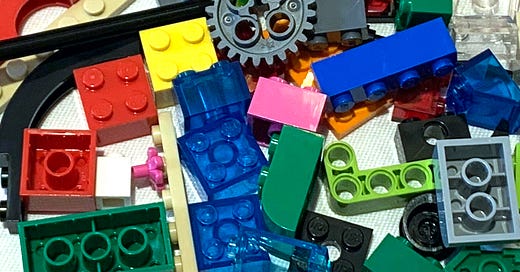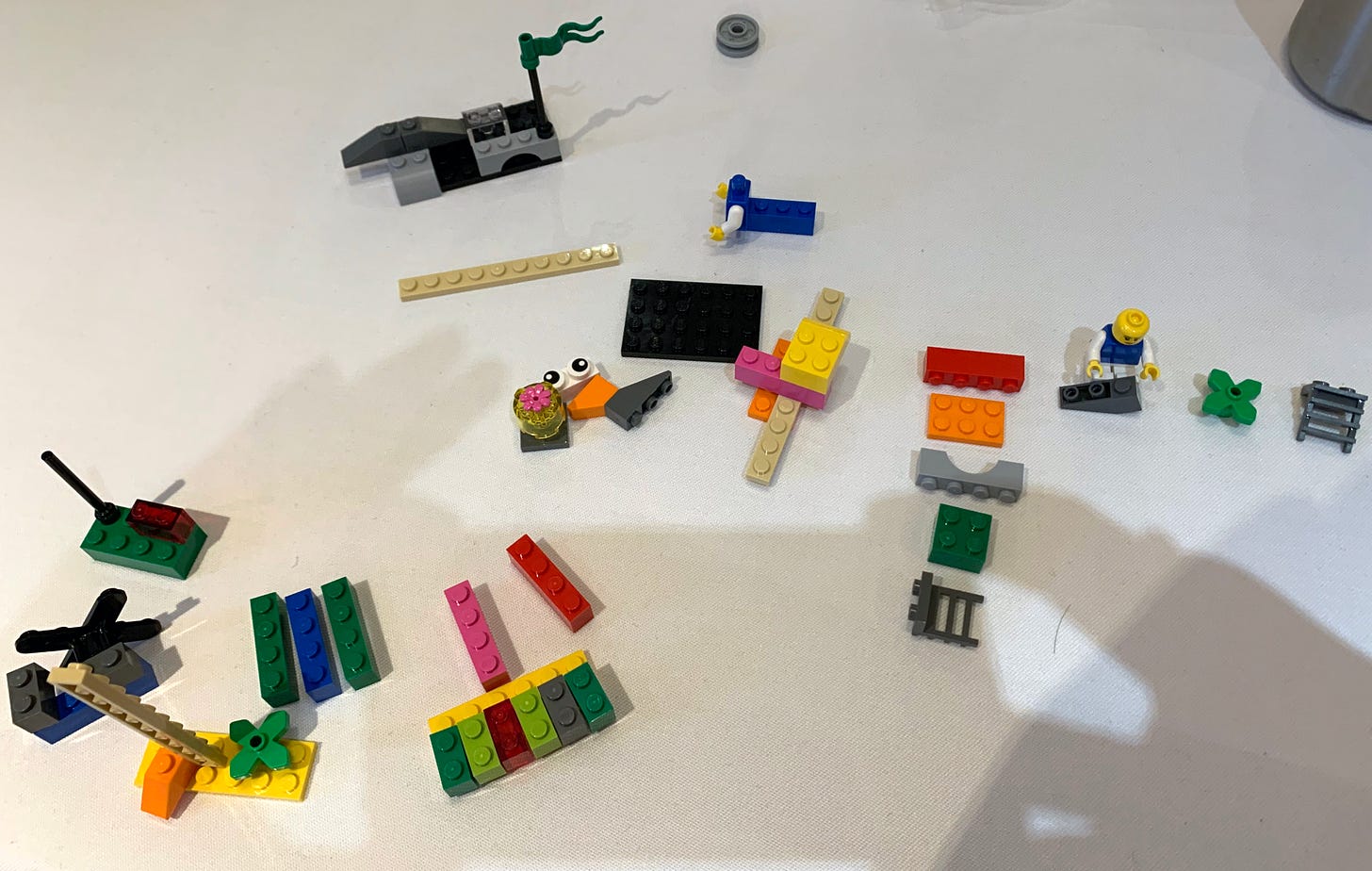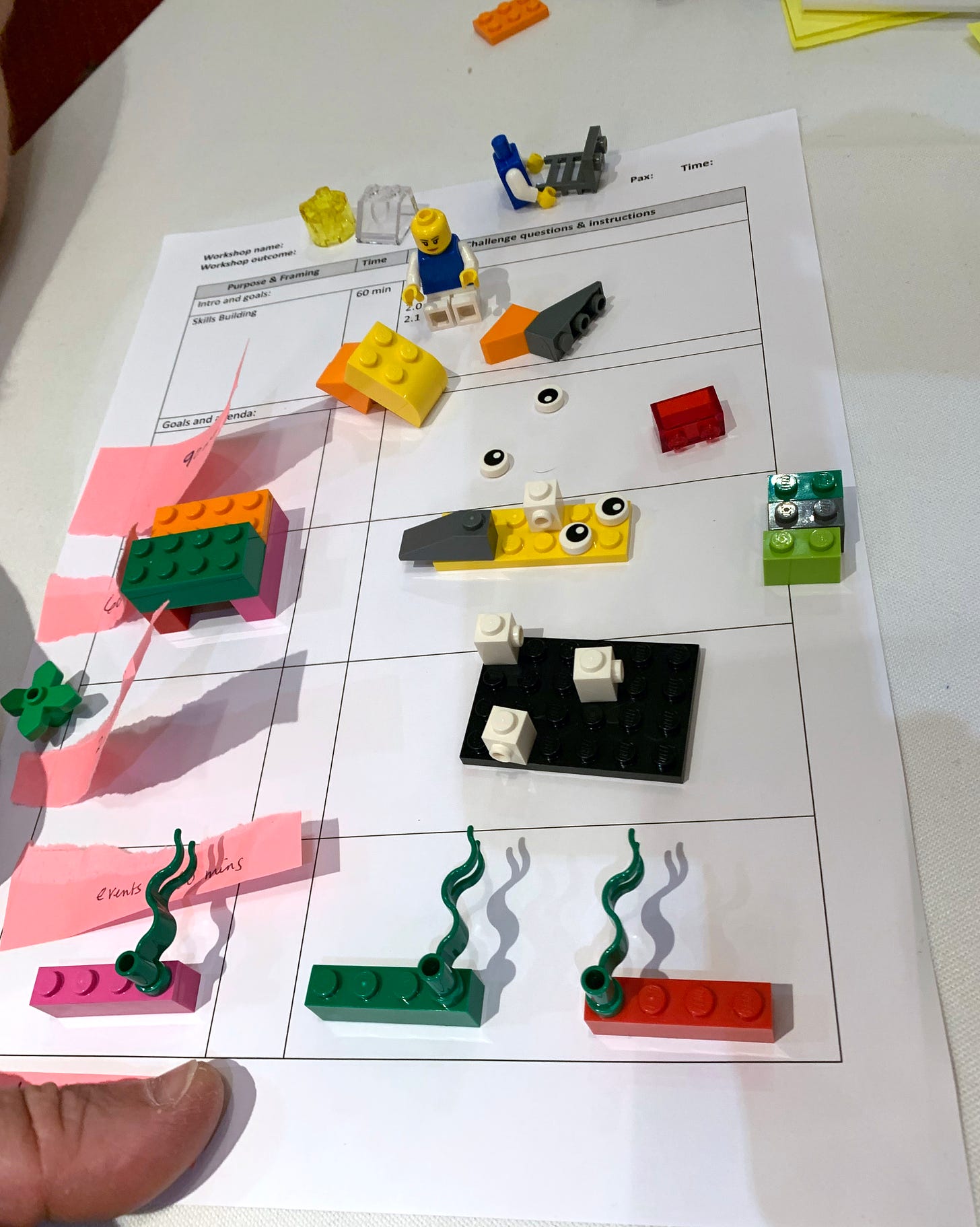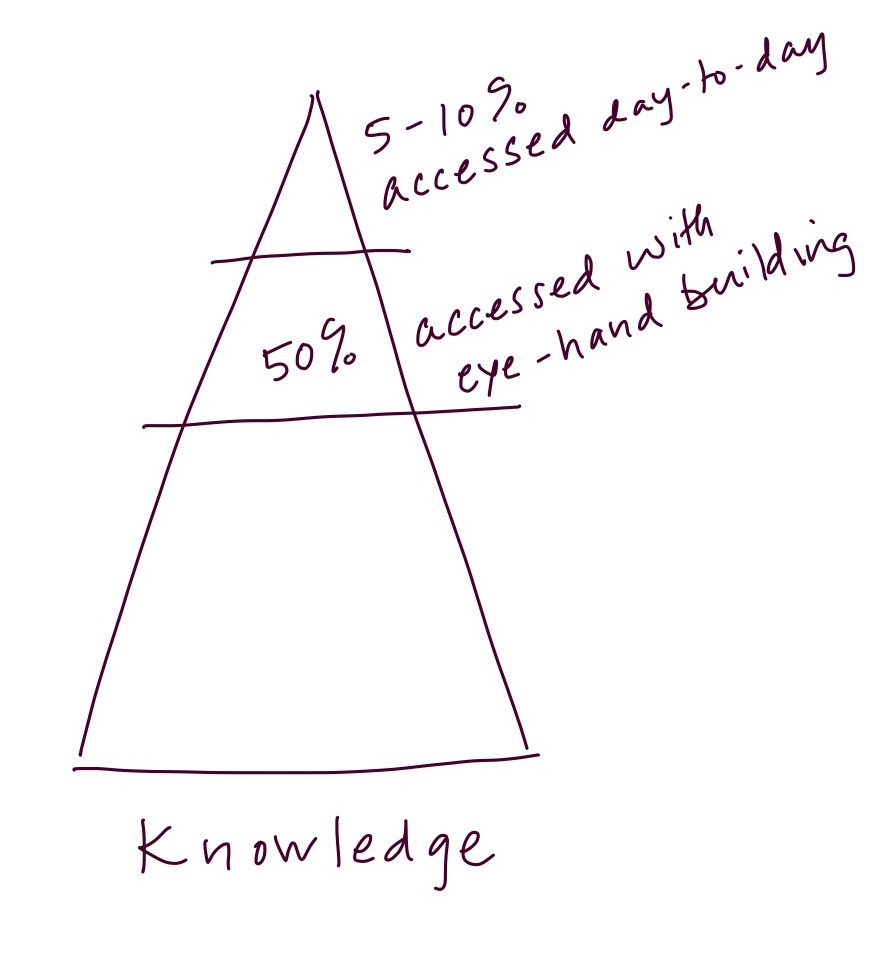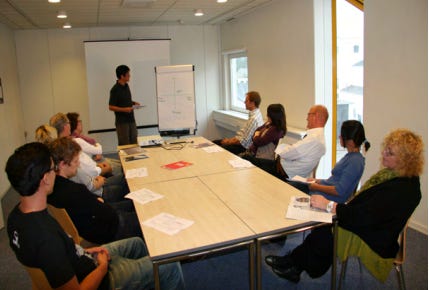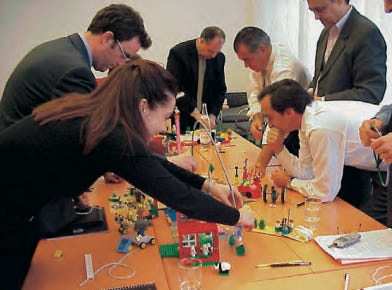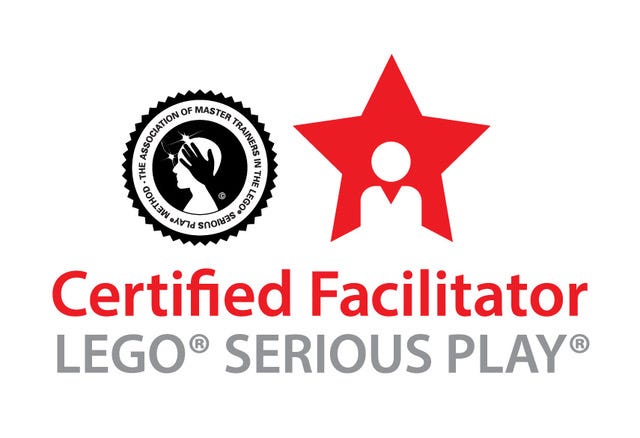Facilitation with LEGO bricks
After 40+ hours of in-person work and practice building, I’ve become a certified facilitator in LEGO® SERIOUS PLAY® or LSP for short. (Lego has made the method ‘open source’ but requests that people keep the trademark symbols.)
I had done a ‘taster session’ for this method and was astonished by how the building process activates your brain. I’m glad I immersed myself in this ‘hard fun.’
The LSP method engages participants in understanding, communicating and solving problems by building models with LEGO bricks—building personal models but also building ‘shared’ models.
As someone attached to writing (for example taking notes as a way of processing and remembering) I was skeptical of using non-written methods, especially to scope and plan a workshop. But it really works. For example, here’s the result of my interview with ‘the client’ to understand their problem:
Using the bricks to help articulate the problem was very powerful and also quick. Here’s the workshop plan we developed from the scoping:
At this stage we did write the workshop onto this sheet of paper, but even now this image of the bricks is, for me, a charged shorthand.
Representation vs metaphor
One misconception people might have about the LSP method is that you build ‘representative’ models, where for example we represent ‘a meeting’ by building 4 mini-figures (the meeting participants) around a block (the table).
Instead the LSP method calls on metaphor, where one brick might describe an activity (such as a meeting), a person, a feeling, the passage of time, or anything the builder wants it to represent. The two images above give a sense of the metaphor models. They may not look like anything until I tell their story. Then the meaning comes to life.
Why does it work?
There’s a lot of science backing the LSP method. First, there’s the theory of ‘flow’ where you get so involved in something you lose track of time. Flow requires an activity to be ‘adequately hard’ so that it’s engrossing. The challenge of building models that can help tell stories (about you work, your challenges, or your team) is the perfect level of ‘hard.’ It turns out enjoyment and learning are two sides of the same coin.
There’s also the hand-brain connection. Using hands and brain together in building, you maximise all the senses and serve all learning styles at once. And building in 3-dimensions, or thinking with objects, draws more fully on imagination. This allows you to unlock a lot more of your knowledge. Whereas day-to-day you might access 5-10% of your knowledge, while building you’re able to unlock nearer to 50%.
Result
The bricks can help you unlock knowledge, imagination and communication to solve problems. Everybody builds, so it turns your ‘lean back’ meetings into ‘lean forward’ meetings!
A trial workshop for you
Get in touch if you’d like to try a preview workshop to get your hands on the bricks and experience the power of this method.
I’m not abandoning the sticky note/flip chart/white board facilitation techniques, but I can see a lot of scope for facilitating with the LSP method and even combining the two.

